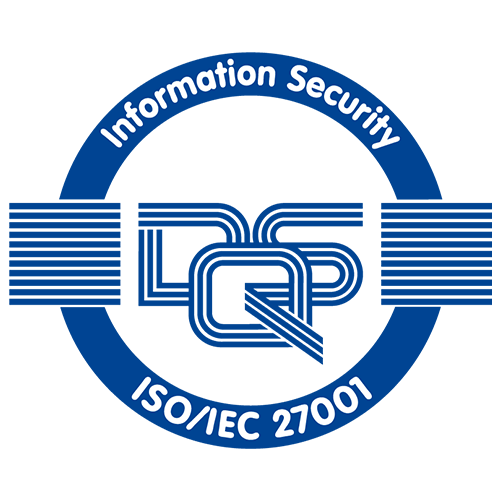By 2026, the global market for digital transformation is expected to reach 3.4 trillion U.S. dollars.
With the rise of digital technologies, businesses across industries are undergoing a digital transformation to stay ahead of the competition, and multi-asset brokers are no exception. They need fully configurable platform for:
-
Reaching the prospects globally
-
Retaining the existing traders
-
Fast and easy operations
-
Effortless client onboarding and account management
-
Build trust and increase business efficiency
However, the question remains: should you outsource your digital transformation or build an in-house team?
Making the right decision can be a game-changer for your brokerage. According to a recent report, the global multi-asset trading market size was valued at $1.6 billion in 2020 and is projected to grow at a compound annual growth rate (CAGR) of 11.7% from 2021 to 2028. To stay competitive in this growing market, it’s essential to adopt the latest digital technologies and streamline your operations.
In this blog post, we’ll explore the pros and cons of outsourcing versus building an in-house team for digital transformation and provide insights to help multi-asset brokers make an informed decision. So, whether you’re a broker looking to streamline your operations or simply interested in the latest trends in digital transformation, read on to discover which approach is best for you. Let’s dive in!
Build vs Buy: Things to consider 
The decision to build or buy Forex software should not come down to the flip of a coin. As a multi-asset broker, you should consider:
1. Time to value
This is probably an important consideration: how long will it take to build and realize the value of your investment?
Build: Building the FX platform from scratch can take years. It involves A/B testing, various resources, regular updates to meet your evolving needs, and the list continues. This can lead to a subpar solution that impacts adoption and time to value.
Buy: Buying the solution can help you get moving quickly. A platform like FYNXT IB Manager can be configured to suit your exact needs much quicker than building from scratch.
2. Connectivity and Integrations
To build a successful platform, it needs to be connected and integrated with several providers for a seamless user-experience.
Build: As a broker, you will understand what integrations are necessary for making a robust platform for your traders. However, it can take a long time and be hard for your IT team to set up all the integrations.
Buy: Buying existing FX software is easier because most of the providers like FYNXT offer easy and secure integrations to other platforms. For instance, we allow our clients to integrate our modules within their existing ecosystem with our Open API’s.
3. Monetary Cost
This is the crunch: When it comes to choosing between building your own software or buying existing software for your pricing solution, cost is a major factor to consider.
Build: If you choose to build your own software, you have more control over your budget, but you must consider all the costs associated with the project, including the initial build, implementation, integrations, testing, maintenance, and upgrades. Usually, the total cost can end up being more expensive than you anticipated.
Buy: Buying a platform for your multi-asset brokerage comes with an initial cost, but you will typically pay a monthly subscription fee instead of a large upfront amount. This can be more cost-effective in the long run, as ongoing maintenance, security, and upgrades are often included in your subscription.
4. Maintenance and Resources
No matter if you’re planning to build or buy the best Forex CRM, it will require both – maintenance and resources.
Build: If you build your own Forex software, you have to take care of maintaining it. This can be difficult because your team may not have the same level of expertise as professionals who handle cloud-based solutions. Also, starting from scratch can be daunting, even if your team has met with users to discuss their needs
Buy: When buying the solutions, the vendor will take care of maintenance and upgrades for you. The software like FYNXT Client Manager already has pre-configured functionality built in, which can be customized to fit your needs. Also, they have the best professionals so you’re building up on the shoulders of experts instead of starting from scratch.
5. Opportunity Cost
Opportunity cost is the loss of other alternatives when one alternative is chosen.
Build: Building it yourself means checking the availability of your IT Team and looking if they have enough time and resources. You also need to consider other important activities they are working on and decide which option will benefit your business more. Here, you don’t have control over the opportunity cost.
Buy: Buying from an industry-leading vendor means you can use their pre-existing software and let your IT team focus on their core responsibilities. Thus, this will help to keep the opportunity cost to almost zero.
The Bottom Line
In conclusion, digital transformation is no longer optional for multi-asset brokers. Whether to outsource or maintain an in-house team for digital solutions depends on various factors such as cost, expertise, and scalability. However, outsourcing digital solutions is becoming increasingly popular due to the advantages it offers.
At FYNXT, we help you drive growth for your brokerage with our easy-to-integrate and instantly scalable solution. With our Plug ‘N’ Play modules, multi-asset brokers can focus on their core business, reduce costs, access expert knowledge, and stay up to date with the latest technology trends. To learn more about our offerings, schedule a call today!


